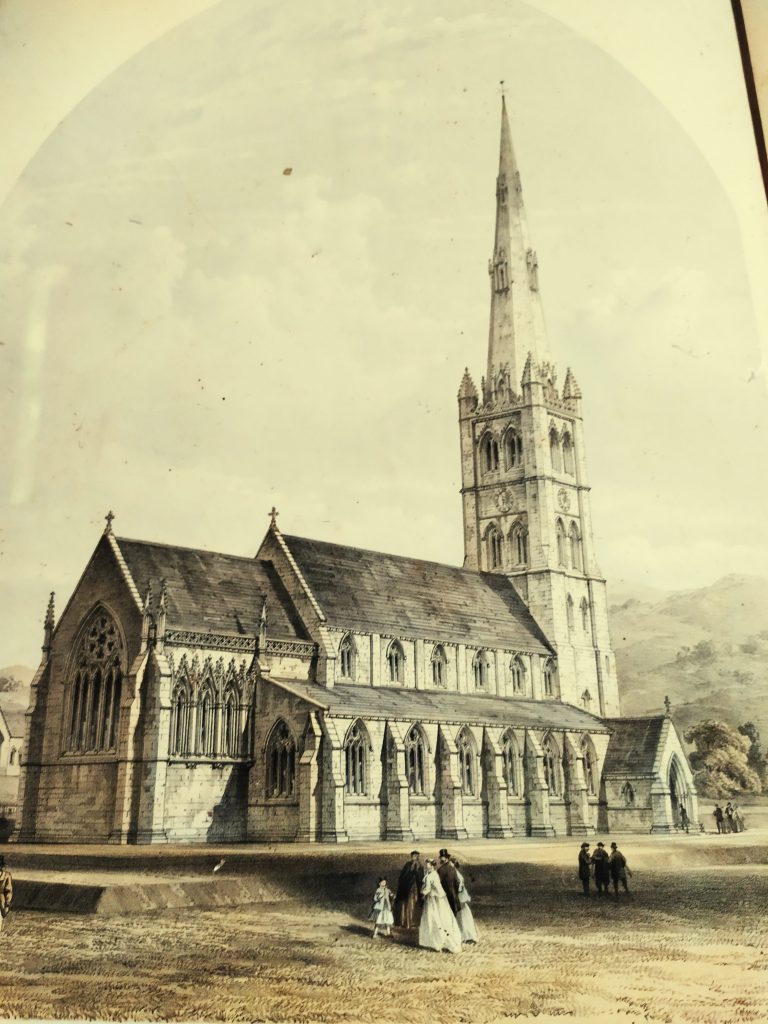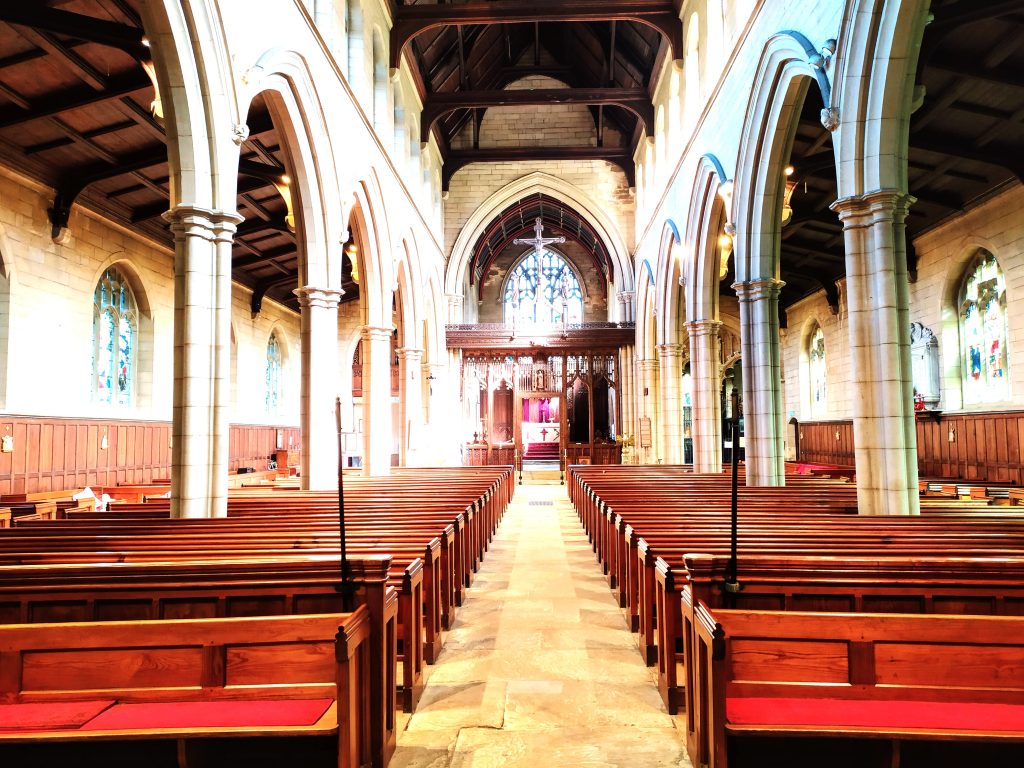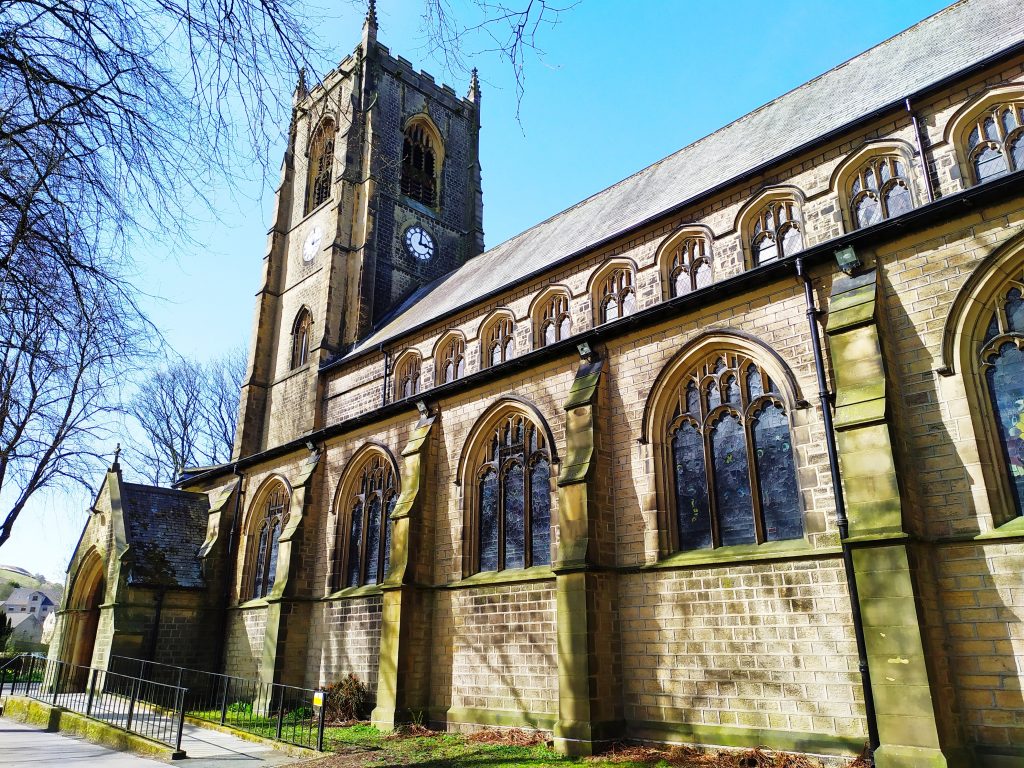Introduction to the work required at St Bartholomew’s Church
History of the Church building…
First Chapel
A chapel of ease was built sometime between 1433 and 1455 because of the difficulty of travelling to Huddersfield to worship; it accommodated 311 people and was dedicated to Our Lady.
It fell into decay within a few years. The people appealed to the King (Edward IV) who gave a small endowment to help upkeep the chapel. There is very little information for some 300 years – although there is a note of a rushbearing service at Marsden on St Bartholomew’s Day 1691 – 24 August. Whether the dedication of the original chapel had changed to St Bartholomew by that time, or that the service was simply held on that day, which was a widely celebrated festival at that time, is unclear.
Second Chapel
By the middle of the 18th century the first chapel was so dilapidated that the decision was made to build a new one on the same site – across Church Lane from the present church – where the outline of the foundations can still be seen. This building, erected in 1758, seated 648 and had 3 galleries.
It had an earth floor so that people could be buried within the church, but it became so crowded with burials that they were crammed together and were often only a few inches below the surface – very unhealthy! So the decision was made in 1865 to build a new church on the present site. Plans were drawn up for building to seat 800 – clearly they have always built “large” here in Marsden. For some time we considered that the present church would seat 600 people but recent changes to the layout of some of the pews and the removal or others means that we can now seat 460 in the Nave.

The original architect was William Henry Crossland a pupil of George Gilbert Scott. Foundations were begun but there was a dispute between the contractor and building committee, and the foundations were covered over again; the congregation repaired and renovated the old chapel and went back to worshipping there for a further 30 years or so.
The Present Church
In the 1890’s Revd Richard Buller became Vicar – he was described as a man of unbounded energy and strong determination. Under his tenure of office plans were put forward to re-start the building works. Hodgson Fowler of Durham, assisted by James Kirk of Marsden were the new architects. Foundation stones were laid in 1894 and the main rectangle of this building, forming the present Nave, was completed and dedicated in October 1895.
More money had to be raised to build the Chancel, Lady Chapel and the vestries and these were started in 1898 and dedicated the following year. It originally had 500 beech wood chairs which were replaced in 1907 with the present stained pitch pine pews, given by the builder of the church, James Whitehead of Oldham, in memory of his wife Hannah. The chairs are thought to have been sent to Selby Abbey, probably to replace those lost in a fire there at that time. The church had one bell at that stage.
In 1910 the temporary stone wall at the west end was showing signs of weathering and it was decided to commence building the Tower and Baptistery. The foundations had already been laid and it was completed and dedicated on 6 May 1911.
St Bartholomew’s Church requires approximately £2500 per month in running costs, and this does not address the capital costs to support building repairs which are almost constant. If you are able to financially help St Bartholomew’s Church with any gift, please click the “Give A Little” icon to make a donation.




